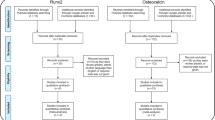Abstract
Stimulation of bone formation is a key therapeutic target in osteoporosis. Runx2 is a runt domain transcription factor essential to osteoblast differentiation, bone remodeling, and fracture healing. Runx2 knockout mice exhibit a complete lack of ossification, while overexpression of this gene in transgenic mice results in an osteoporotic phenotype. Thus, RUNX2 is a good candidate for the genetic determination of osteoporosis. In this association study, the effects of the -330 G/T polymorphism in promoter 1 and the -1025 T/C polymorphism (rs7771980) in promoter 2 of RUNX2 were tested in relation to lumbar spine (LS) and femoral neck (FN) bone mineral density (BMD) in a cohort of 821 Spanish postmenopausal women. The minor allele frequencies for the two polymorphisms were 0.15 and 0.07, respectively. The two polymorphisms, located more than 90 kb apart, were not in linkage disequilibrium (D′ = 0.27, r 2 = 0.028). In an ANCOVA test adjusting by weight, height, age, and years since menopause, the -330 G/T polymorphism was not associated with any of the phenotypes analyzed, while we found the -1025 T/C polymorphism to be associated with FN BMD (p = 0.001). In particular, individuals carrying the TC genotype had higher mean adjusted FN BMD values than those bearing the TT genotype. Our results highlight the importance of this RUNX2 promoter 2 polymorphism in FN BMD determination.
Similar content being viewed by others
References
Ducy P, Karsenty G (1995) Two distinct osteoblast-specific cis-acting elements control expression of a mouse osteocalcin gene. Mol Cell Biol 15:1858–1869
Ducy P, Zhang R, Geoffroy V, Ridall AL, Karsenty G (1997) Osf2/Cbfa1: a transcriptional activator of osteoblast differentiation. Cell 89:747–754
Komori T, Yagi H, Nomura S, Yamaguchi A, Sasaki K, Deguchi K, Shimizu Y, Bronson RT, Gao YH, Inada M, Sato M, Okamoto R, Kitamura Y, Yoshiki S, Kishimoto T (1997) Targeted disruption of Cbfa1 results in a complete lack of bone formation owing to maturational arrest of osteoblasts. Cell 89:755–764
Otto F, Thornell AP, Crompton T, Denzel A, Gilmour KC, Rosewell IR, Stamp GW, Beddington RS, Mundlos S, Olsen BR, Selby PB, Owen MJ (1997) Cbfa1, a candidate gene for cleidocranial dysplasia syndrome, is essential for osteoblast differentiation and bone development. Cell 89:765–771
Liu WG, Toyosawa S, Furuichi T, Kanatani N, Yoshida C, Liu Y, Himeno M, Narai S, Yamaguchi A, Komori T (2001) Overexpression of Cbfa1 in osteoblasts inhibits osteoblast maturation and causes osteopenia with multiple fractures. J Cell Biol 155:157–166
Ducy P, Starbuck M, Priemel M, Shen J, Pinero G, Geoffroy V, Amling M, Karsenty G (1999) A Cbfa1-dependent genetic pathway controls bone formation beyond embryonic development. Genes Dev 13:1025–1036
Kawahata H, Kikkawa T, Higashibata Y, Sakuma T, Huening M, Sato M, Sugimoto M, Kuriyama K, Terai K, Kitamura Y, Nomura S (2003) Enhanced expression of Runx2/PEBP2alphaA/CBFA1/AML3 during fracture healing. J Orthop Sci 8:102–108
Mundlos S, Otto F, Mundlos C, Mulliken JB, Aylsworth AS, Albright S, Lindhout D, Cole WG, Henn W, Knoll JH, Owen MJ, Mertelsmann R, Zabel BU, Olsen BR (1997) Mutations involving the transcription factor CBFA1 cause cleidocranial dysplasia. Cell 89:773–779
Otto F, Kanegane H, Mundlos S (2002) Mutations in the RUNX2 gene in patients with clelidocranial dysplasia. Hum Mutat 19:209–216
Geoffroy V, Corral DA, Zhou L, Lee B, Karsenty G (1998) Genomic organization, expression of the human CBFA1 gene, and evidence for an alternative splicing event affecting protein function. Mamm Genome 9:54–57
Xiao Z, Thomas R, Hinson TK, Quarles LD (1998) Genomic structure and isoform expression of the mouse, rat and human Cbfa1/Osf2 transcription factor. Gene 214:187–197
Terry A, Kilbey A, Vaillant F, Stewart M, Jenkins A, Cameron E, Neil JC (2004) Conservation and expression of an alternative 3′ exon of Runx2 encoding a novel proline-rich C-terminal domain. Gene 336:115–125
Stock M, Otto F (2005) Control of RUNX2 isoform expression: the role of promoters and enhancers. J Cell Biochem 95:506–517
Xiao Z, Hjelmeland AB, Quarles LD (2004) Selective deficiency of the “bone-related” Runx2-II unexpectedly preserves osteoblast-mediated skeletogenesis. J Biol Chem 279:20307–20313
Vaughan T, Pasco JA, Kotowicz MA, Nicholson GC, Morrison NA (2002) Alleles of RUNX2/CBFA1 gene are associated with differences in bone mineral density and risk of fracture. J Bone Miner Res 17:1527–1534
Vaughan T, Reid DM, Morrison NA, Ralston SH (2004) RUNX2 alleles associated with BMD in Scottish women; interaction of RUNX2 alleles with menopausal status and body mass index. Bone 34:1029–1036
Doecke JD, Day CJ, Stephens AS, Carter SL, van Daal A, Kotowicz MA, Nicholson GC, Morrison NA (2006) Association of functionally different RUNX2 P2 promoter alleles with BMD. J Bone Miner Res 21:265–273
Napierala D, Garcia-Rojas X, Sam K, Wakui K, Chen C, Mendoza-Londono R, Zhou G, Zheng Q, Lee B (2005) Mutations and promoter SNPs in RUNX2, a transcriptional regulator of bone formation. Mol Genet Metab 86:257–268
Barrett JC, Fry B, Maller J, Daly MJ (2005) Haploview: analysis and visualization of LD and haplotype maps. Bioinformatics 21:263–265
Purcell S, Cherny SS, Sham PC (2003) Genetic Power Calculator: design of linkage and association genetic mapping studies of complex traits. Bioinformatics 19:149–150
Riggs BL, Parfitt AM (2005) Drugs used to treat osteoporosis: the critical need for a uniform nomenclature based on their action on bone remodeling. J Bone Miner Res 20:177–184
Acknowledgments
Robin Rycroft provided editorial assistance. MB and LA were recipients of fellowships from the Spanish Ministerio de Ciencia y Tecnología and Generalitat de Catalunya, respectively. This study was supported by grants from the Spanish Ministerio de Ciencia y Tecnología (PM1999-0131-C02-01), the Spanish Ministerio de Educación y Ciencia (SAF2004-06085), the European Commission (GENOMOS Project grant QLRT-2001-02629), the Spanish Ministerio de Sanidad (FIS 98/1952), and the Catalan Departament de Universitats, Recerca i Societat de la Informació (2005SGR 00762 and 2005SGR 00848).
Author information
Authors and Affiliations
Corresponding author
Rights and permissions
About this article
Cite this article
Bustamante, M., Nogués, X., Águeda, L. et al. Promoter 2 -1025 T/C Polymorphism in the RUNX2 Gene Is Associated with Femoral Neck BMD in Spanish Postmenopausal Women. Calcif Tissue Int 81, 327–332 (2007). https://doi.org/10.1007/s00223-007-9069-2
Received:
Accepted:
Published:
Issue Date:
DOI: https://doi.org/10.1007/s00223-007-9069-2




